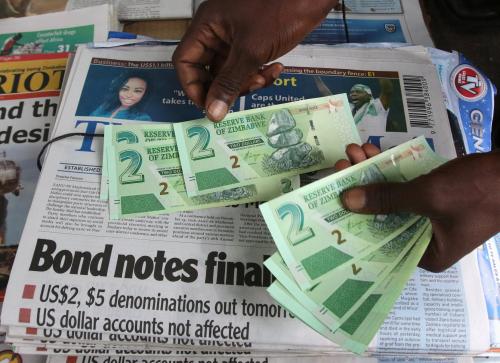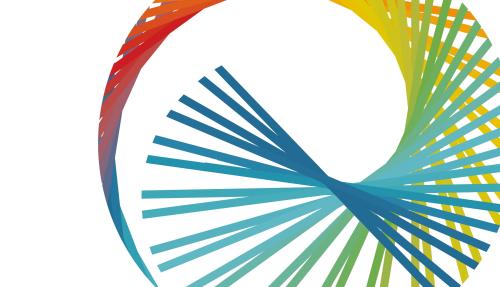Below is a viewpoint from Chapter 2 of the Foresight Africa 2018 report, which explores six overarching themes that provide opportunities for Africa to overcome its obstacles and spur inclusive growth. Read the full chapter on sustainable financing for African development here.
About 40 percent of the population in sub-Saharan Africa, or nearly 1 billion people, live in an urban area today. Over the next 25 years, that number is expected to double, raising unprecedented challenges for the region. The confluence of this rising urban population, relatively low income per capita, and a lack of infrastructure are serious causes for concern. As the region already confronts critical deficits in infrastructure and related funding, the looming crisis in the provision of urban infrastructure, especially transport, requires particular attention.
Projecting the level of infrastructure funding required for urban Africa is fraught with complexities. The continent requires an annual $93 billion to fund infrastructure needs, a large share of which is for urban areas. In fact, a 2016 African Development Bank study states that “two-thirds of the investments in urban infrastructure to 2050 have yet to be made.”
The infrastructure gap is notably reflected in the inadequacy of transport infrastructure in African cities. Compared with access to electricity, water and sanitation, and telecommunications, defining a target for urban transport access is not clear-cut. Yet, it is evident that African cities are physically fragmented and dispersed with a lack of connective infrastructure. Compared with Paris, for instance, much of the area surrounding the central business districts of many of Africa’s largest cities are without paved roads (Figure 2.7). This poor infrastructure leaves people and firms disconnected, constraining their accessibility to economic opportunity. Such inefficiencies in the design of the city can make urban living costs burdensome and jeopardize the potential benefits of agglomeration.

Africa’s scope for public capital investment is well under what it ought to be if we compare it to other developing regions. Urban income levels in Africa are well below the levels witnessed in other regions when those regions reached an urbanization rate of 40 percent (Figure 2.8). When combined with the relatively high cost of living in African cities (Figure 2.9), there are very limited resources for public investment. This dearth is part of the reason that capital investment in Africa over the past 40 years has only averaged about 20 percent of GDP. In contrast, between 1980 and 2011, rapidly urbanizing countries in East Asia averaged capital investment above 40 percent of GDP, bringing many economic boons to the region and its cities.

Without a substantive revenue source and ability to pay, there are limited options to fund and finance urban transport. Concessional resources from the donor community have traditionally shied away from urban capital investments nor are they of sufficient scale. More recent efforts to attract private capital are more difficult in urban transport because of the lack of a revenue stream. Private participation in infrastructure in Africa has been more directed at information and communications technology and, to a more limited degree, to energy and transport in terms of sectoral and country coverage.

If Africa is to avoid the perfect storm that these trends imply, it will need “out-of-the-box” thinking particular to its unique context. While there are various opportunities and initiatives to finance equitable and sustainable urban growth in Africa, at the center of any effective effort is the issue of land in terms of the efficiency of transport provision as well as a source for funding. Getting land policy right and resolving the range of issues unique to African land will be key to supporting private sector growth, ensuring ample and affordable housing, and securing resources for infrastructure and other urban development needs.
REFERENCES
African Development Bank, Organization for Economic Co-operation and Development, United Nations Development Program. 2016. African Economic Outlook 2016: Sustainable Cities and Structural Transformation.
Foster, Vivien and Cecilia Briceno-Garmendia. 2009. Africa’s Infrastructure: A Time for Transformation. Africa Development Forum Series. Washington, DC: World Bank. http://documents.worldbank.org/curated/ en/2009/01/11487313/africas-infrastructure-time-transformation.
Gutman, Jeffrey; Sy, Amadou; Chattopadhyay, Soumya. 2015. Financing African Infrastructure: Can the World Deliver? Washington, DC: The Brookings Institution. https://www.brookings.edu/wp-content/uploads/2016/07/AGIFinancingAfricanInfrastructure_FinalWebv2.pdf.
Lall, Somik Vinay; Henderson, J. Vernon; Venables, Anthony J. 2017. Africa’s Cities: Opening Doors to the World. Washington, DC: World Bank. https:// openknowledge.worldbank.org/handle/10986/25896.
Private Participation in Infrastructure Database, World Bank, 2017.
The Guardian (2016) Africa’s urbanisation ‘megatrend’ needs to deliver growth, says report. https://www.theguardian.com/global-development/2016/ jun/07/africa-urbanisation-megatrend-needs-to-deliver-growth-says-report.
The Brookings Institution is committed to quality, independence, and impact.
We are supported by a diverse array of funders. In line with our values and policies, each Brookings publication represents the sole views of its author(s).









Commentary
Foresight Africa viewpoint – Urban Africa: Avoiding the perfect storm
January 26, 2018